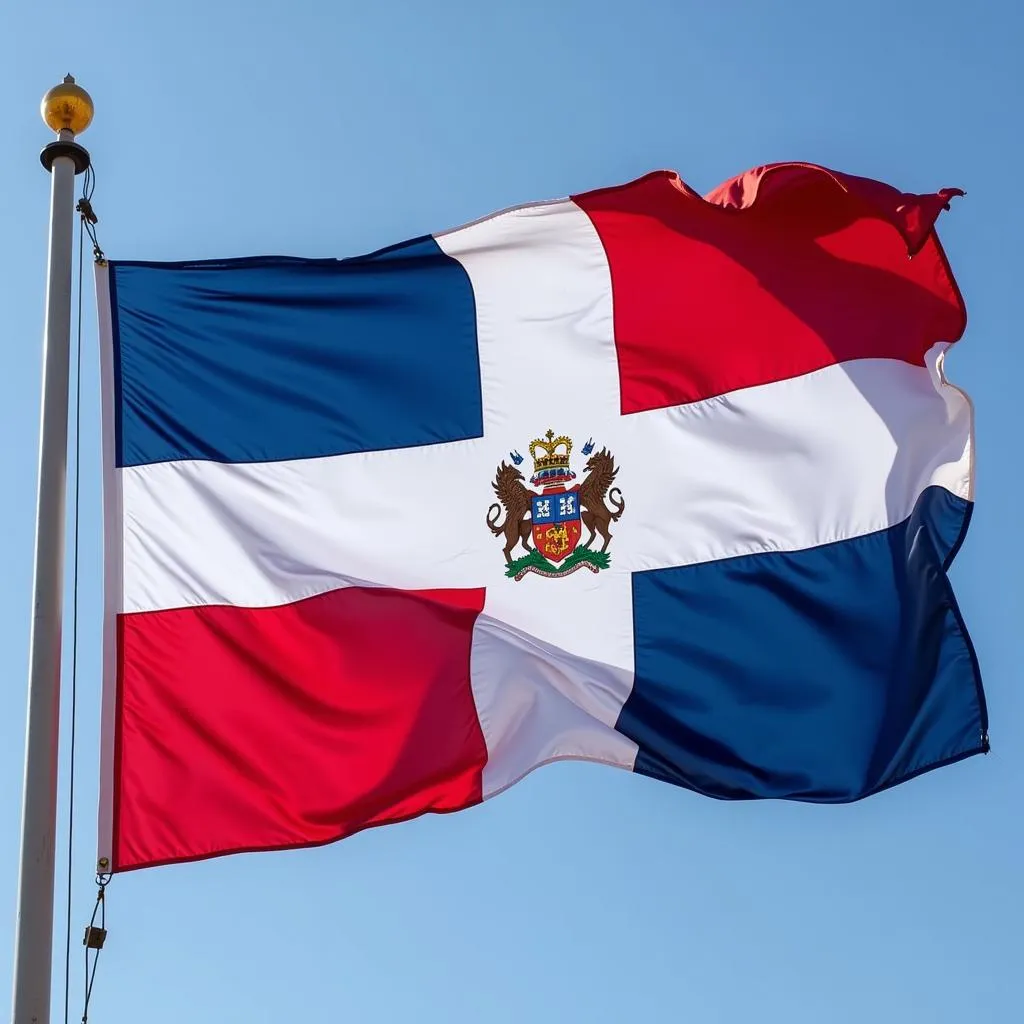The Dominican flag, a powerful symbol of national pride and identity, is a striking tapestry of vibrant colors and meaningful emblems. But have you ever wondered what the colors of the Dominican flag mean? Each element holds a deep historical and cultural significance, reflecting the Dominican Republic’s journey to independence and the values it holds dear.
Unveiling the Symbolism: A Closer Look at the Dominican Flag
The Dominican flag, officially adopted in 1844, is a bold composition of a centered white cross, dividing the flag into four alternating quadrants of blue and red. At the heart of the cross lies the national coat of arms, featuring a red, white, and blue shield adorned with a bible, a cross, and olive branches.
Let’s delve deeper into the individual components and their profound meanings:
The Cross: A Beacon of Faith and Liberation
The prominent white cross, extending to the edges of the flag, represents the unwavering faith and religious devotion of the Dominican people, primarily rooted in Catholicism. More than just a religious symbol, the cross also embodies the struggle for freedom and independence from Haitian rule.
Blue: Representing the Sky and the Sea
The upper left and lower right quadrants of the Dominican flag are a vibrant blue, symbolizing the vast sky that embraces the nation and the surrounding waters that connect it to the world. This blue also represents liberty, the very ideal the Dominican people fought for.
 Dominican flag closeup
Dominican flag closeup
Red: The Blood of Heroes and the Fire of Patriotism
The remaining two quadrants, bathed in a bold red, serve as a powerful reminder of the sacrifices made by Dominican heroes during their fight for independence. The red embodies the courage, determination, and patriotic fervor that fueled their struggle.
The National Coat of Arms: A Tapestry of Values
Nestled at the heart of the cross lies the Dominican Republic’s national coat of arms, a symbol brimming with further layers of meaning:
- The Bible: Open to the Gospel of John, chapter 8, verse 32, “Y la verdad os hará libres” (“And the truth shall set you free”), signifying the importance of truth and knowledge in achieving freedom.
- The Cross and Olive Branches: Together, they symbolize the nation’s Christian faith and the aspiration for peace.
Understanding the Dominican Flag: More Than Just Colors
The Dominican flag, in its entirety, is not merely a visual representation but a powerful embodiment of the nation’s spirit, history, and values. Its vibrant colors, bold design, and intricate details tell a story of faith, struggle, sacrifice, and ultimately, triumph. Understanding the symbolism embedded within the flag offers a glimpse into the heart and soul of the Dominican Republic and its people.
 Dominican Republic landscape
Dominican Republic landscape
FAQ: What Else Do You Want to Know?
1. When was the Dominican flag first adopted?
The Dominican flag was officially adopted on November 6, 1844.
2. Who designed the Dominican flag?
The Dominican flag’s design is often attributed to María Trinidad Sánchez, a national heroine who played a significant role in the Dominican War of Independence.
3. Is the Dominican flag similar to any other flags?
While visually similar to the flag of Haiti, the Dominican flag distinguishes itself with its white cross and distinct shades of blue and red.
4. Where can I see the Dominican flag flown?
You can see the Dominican flag flown proudly at government buildings, schools, during national holidays, and sporting events. It’s a ubiquitous symbol of Dominican pride.
Need Help with Your Next Design Project?
Do you feel inspired by the vibrant colors and rich symbolism of the Dominican flag? Let Color Box Hanoi be your partner in transforming your living spaces into captivating reflections of your personality and style. Contact us today at 0373298888, email us at [email protected] or visit our showroom at 86 Cầu Giấy, Hà Nội. Our team of color experts and design professionals are available 24/7 to guide you through every step, ensuring your vision comes to life in a symphony of color and design.

